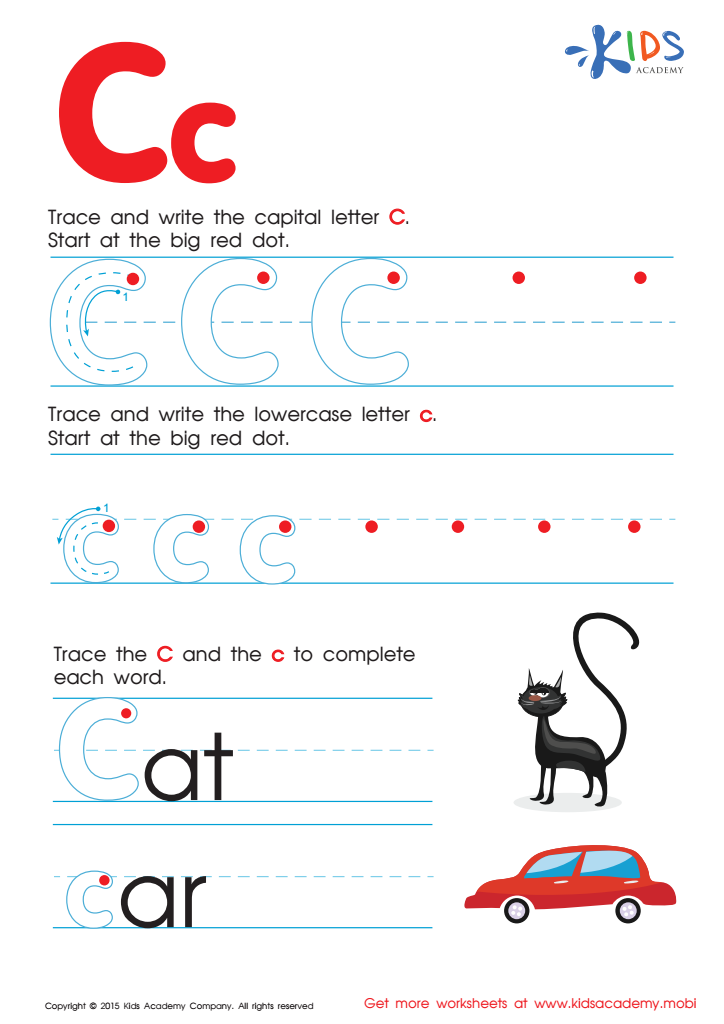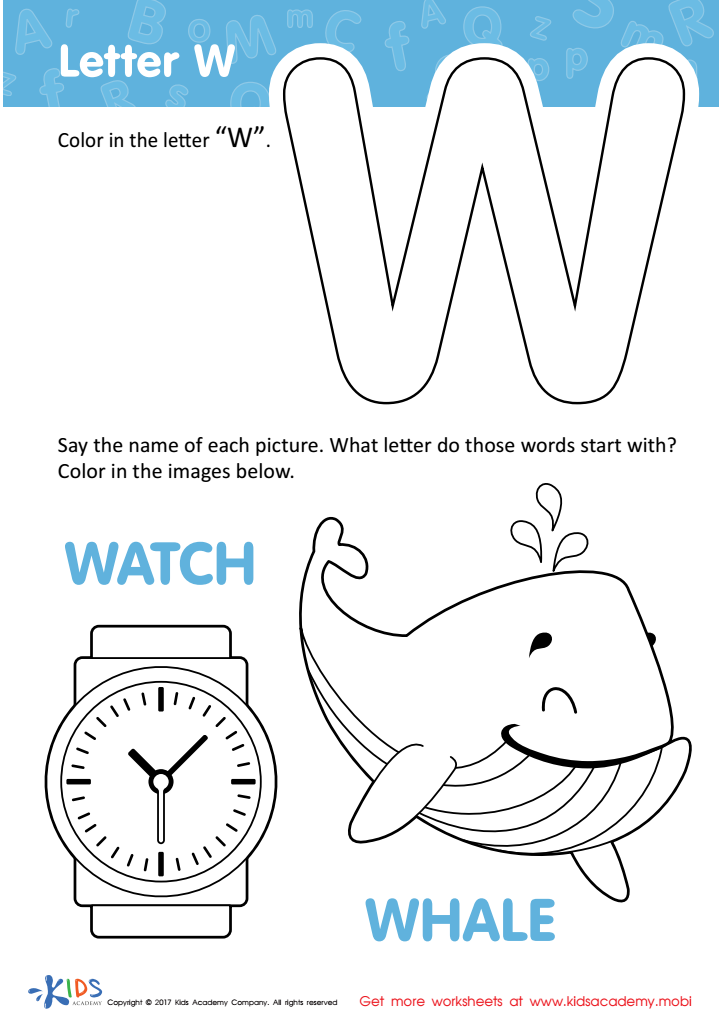Letter tracing skills Letter Recognition Worksheets for 3-Year-Olds
3 filtered results
-
From - To
Boost your child's early literacy with our engaging Letter Tracing Skills and Letter Recognition Worksheets designed for 3-year-olds! These fun, age-appropriate activities help young learners identify letters while enhancing their fine motor skills through tracing exercises. Each worksheet is crafted to capture your child's interest, featuring colorful illustrations and interactive layouts that encourage independent practice. As they trace each letter, they will develop confidence in their writing abilities and a solid foundation for future reading. Explore our collection today to inspire your little one's learning journey and make letter recognition a delightful adventure!


Letter T Coloring Sheet


Letter C Tracing Page


Letter W Coloring Sheet
Letter tracing skills and letter recognition are crucial foundational skills for 3-year-olds, laying the groundwork for future reading and writing abilities. When children engage in letter tracing, they develop fine motor skills, hand-eye coordination, and the muscular control necessary for writing. These activities also help reinforce the shapes and sounds associated with each letter, further enhancing language acquisition and literacy.
Additionally, by recognizing letters early, children become more familiar with the alphabet, which fosters confidence in their emerging literacy skills. Recognizing letters enables kids to connect sounds to written symbols, a critical step in learning to read. The process of tracing letters provides tactile learning experiences, making the abstract concept of written language more accessible.
Moreover, involvement in these skills fosters a love for learning, as children find joy in discovering letters and creating their own written messages. For parents and teachers, supporting letter tracing and recognition at this age cultivates an environment rich in literacy, setting the stage for academic success. Investing time in these skills enriches a child's educational journey, leading to improved cognitive development and readiness for future learning challenges. Thus, prioritizing letter tracing and recognition is essential for any young learner.

 Assign to My Students
Assign to My Students




















